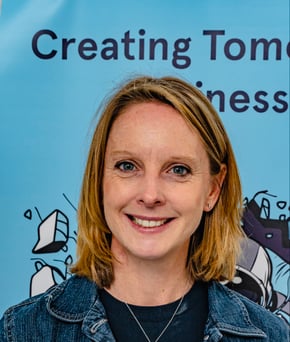Agile helped us to move faster. AI is now supercharging that speed.
But here’s the uncomfortable truth:
Velocity without direction just amplifies waste.
We’ve all seen it. The big launch that was on time and on budget, but flopped. The team worked hard. The features were built. But the business or customer impact? Negligible.. The value never materialised.
Often we celebrate hitting deadlines, but stop to ask:
Why did we build this in the first place?
To avoid “mistaking making stuff for making progress” (as Josh Seiden put it), and start building what actually matters.
Why You Need a Product Compass
Agile and AI provide the speed, but without a compass, you risk heading in the wrong direction faster than ever before.
A Product Operating Model is you that compass. It helps teams move quickly and with confidence. The compass means having these 4 points:
Vision
A clear direction that shows the change you will bring about 3-5 years out, for what user, with what technology
Strategy
Focused choices and trade-offs that align resources to achieve your vision and create competitive advantage
Discovery
Evidence-based ways to uncover customer needs and validate solutions, rather than working on hunches
Focus on Outcomes
Focus on value-based measurements rather than simply tracking outputs and activities.
Vision: Your North Star
A strong product vision sets a clear direction. It paints a picture of the change you’ll bring about in 3–5 years, for what user, using what technology.
A good vision helps your teams make decisions today that you’ll be thankful for tomorrow. It stops you from building “solutions looking for a problem.” And with AI, that temptation is real. It’s fun. It’s clever. But you need to stop an ask, is it actually useful?
Strategy: Making Focused Choices
“The essence of strategy is choosing what not to do.” – Michael Porter
Strategy is often misunderstood as a long document or a laundry list of initiatives. But at its core, it’s about focus and trade-offs.
The best strategies:
-
Make trade-offs clear
-
Create a unique position
-
Align the whole organisation
-
Enable fast, aligned decisions
You don’t need McKinsey. You need clarity. Understand your customer, know your market, and make focused, coherent choices.
If your team can’t connect what they’re working on to your top 3–5 strategic goals, you’ve got a strategy-to-execution gap. That’s how flops happen.
Discovery: Get the Evidence to Reduce Risk
“Everyone does discovery. The difference is when.”
Too often, we build first and ask questions later.
Real discovery means:
-
Talking to users
-
Testing assumptions
-
Using data to verify hypotheses
-
Bringing engineers in early
Tools like the Opportunity Canvas and Assumption Mapping make your thinking visible.
Discovery helps reduce risk and align teams. It’s not just a nice-to-have.
Outcomes: Measuring What Matters
“Outputs track production. Outcomes track impact.”
We all say we care about outcomes. But we often celebrate outputs:
-
“We launched!”
-
“We shipped everything in scope!”
-
“We hit completed all the story points!”
Despite this, you could still have a flop on your hands.
Outcomes are about:
-
Customer success
-
Business impact
-
Solving real problems
Your roadmaps should talk to outcomes, not features. Tie initiatives to leading metrics, strategic goals and outcomes. Get clear on the results you’re aiming for and measure them.
Shared Accountability Changes Everything
A real product model unites cross-functional teams around a common goal.
It’s not “the business” handing over a backlog to IT. It’s shared ownership of the outcome. When engineers understand the customer problem and have a say in solving it, they're not just delivering code. They’re delivering results.
This shift, from delivery to accountability unlocks creativity, collaboration, and impact.









I’ve got a few sailors on my team, one has done the Sydney to Hobart race a few times, and one is gearing up for the Sydney to Auckland race in October (Impressive!) That’s a journey of about 2100km. But here’s the thing, if her compass is just 5 degrees off, she won’t land in Auckland. She’ll miss New Zealand completely... and end up in Chile 12,000 km away.
Now sure, Chile’s great. Amazing wine. Beautiful mountains. But if your customer’s in Auckland, landing in Chile is… well, a navigational flop."
Because in the end, speed doesn’t matter if you’re heading to the wrong continent.

